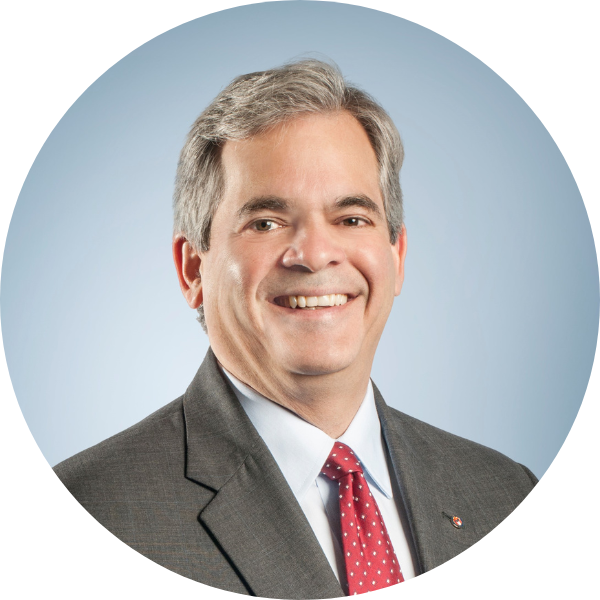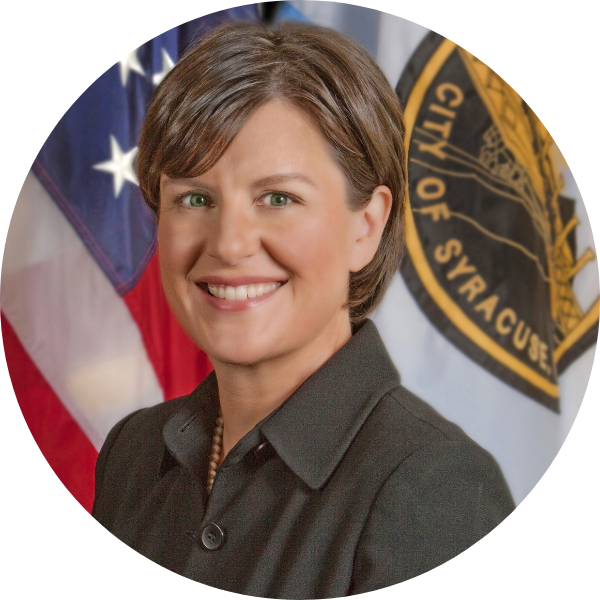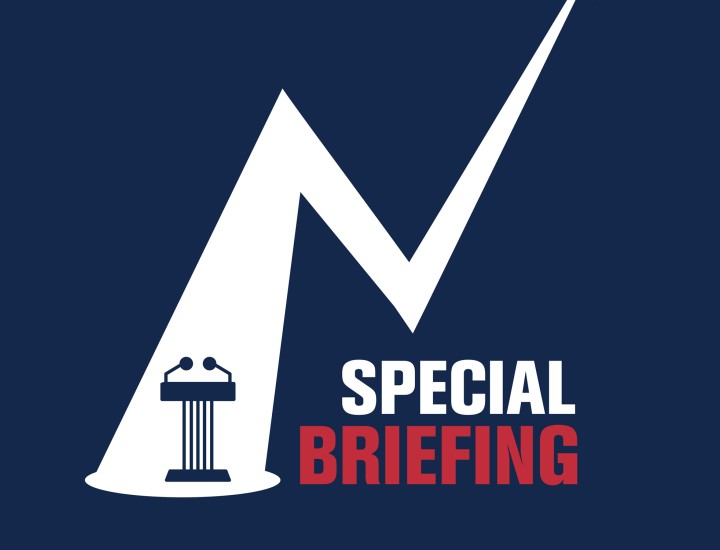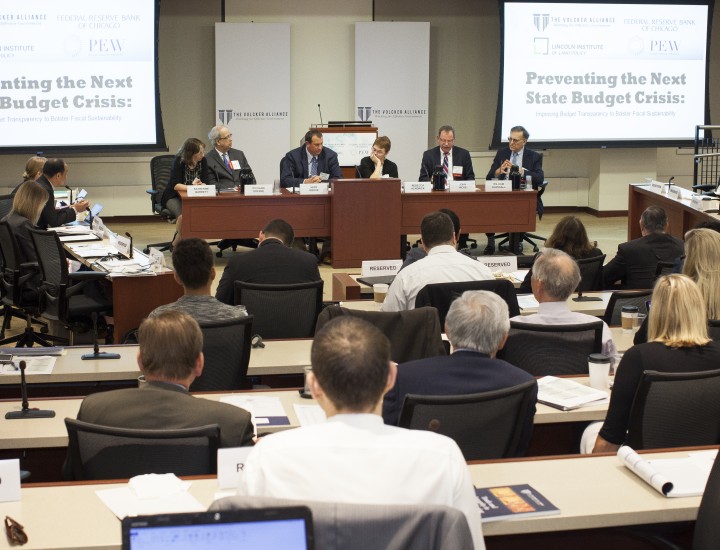Special Briefing | Mayors under Stress: Financing Local Development around the World

Cities around the world are facing a host of challenges. As the Organization for Economic Cooperation and Development observed recently, "places are rethinking how to stay competitive on the global stage. Technological change, the green transition and shifting global value chains are reshaping local economies."
Join Eugenie Birch, Co-Director of Penn IUR, and William Glasgall, Penn IUR Fellow and Volcker Alliance Public Finance Advisor, as our panel of current and former global mayors examine what cities should do now to set their future agendas for growth and shared prosperity. Speakers include Steve Adler, former Mayor, Austin, Texas; Stephanie Miner, former Mayor, Syracuse, New York; Nasiphi Moya, Mayor of Tshwane, South Africa; and Jaime Pumarejo Heins, former Mayor of Barranquilla, Colombia.
This briefing is the fifty-ninth in a series of sixty-minute online conversations featuring experts from the national research networks of the Volcker Alliance and Penn IUR, along with other leading academics, economists, and federal, state, and local leaders.
Special Briefings are made possible by funding from The Travelers Institute, the Volcker Alliance, and members of the Penn IUR Advisory Board. Recordings of the entire Special Briefings series are available on the Volcker Alliance or Penn IUR websites.
Be sure to subscribe to the Special Briefing podcast, available on Apple Podcasts, Spotify, Google Podcasts, TuneIn, iHeart Radio and more.
Subscribe to the Volcker Alliance newsletter and Penn IUR newsletter for advance notice of new Special Briefings.
-----------------------------------------------------------------------------------------------------------------------------------------------------
SPECIAL BRIEFING | MAYORS UNDER STRESS: FINANCING LOCAL DEVELOPMENT AROUND THE WORLD - EVENT RECAP
OECD Urban Days Conference Underscores Urgency
The Special Briefing coincided with a four-day “Urban Days” conference hosted by the Organisation for Economic Cooperation and Development (OECD) in Paris, where Birch was in attendance. Key themes of the conference include housing and mobility, the circular economy, local action and sustainability, and public finance, together forming a holistic dialogue on the continued importance of cities for the OECD’s 38 member countries.
Birch shared the striking insight from a just-released OECD report on Cities for All Ages: “By 2040, one in four of all people in the OECD countries will be an older person. This has huge impacts for how we plan our cities, how we design our cities, and what happens to employment and jobs.” In light of this trend, cities and their mayors will need to increasingly focus on “integrating youth and younger adults and older adults in their economies,” said Birch.
Building a Greener, More Equitable Barranquilla
Pumarejo shared his experience as Mayor of Barranquilla, where in coordination with the OECD he championed major initiatives on “inclusive growth and sustainability.” “How can you build a greener city, but with the idea of making it more equitable, more sustainable, and adapting to climate change?” Pumarejo said. He noted that “smart investments” must acknowledge and address the reality that global challenges such as climate change disproportionately affect the less fortunate.
This is particularly true in the context of housing, as millions live in informal settlements and low-quality dwellings that “were constructed in manners that are not as withstanding to a flood or a storm.” In response to these challenges, Barranquilla, under Pumarejo’s leadership, “made a long-term plan of adapting” despite challenges as a middle-income city in a developing country with limited resources. “We have a lot of things to do, but we don’t have the money to do it. So how do you do that?” The answer, Pumarejo said, is financing “good investments that will become self-sustainable.”
In the case of Barranquilla, these included a $300 million waterfront mixed-use redevelopment project with affordable and public housing components. “Today, the waterfront gets 10 million people visiting a year, from all types of places, from all of the socioeconomic strata of the city.” Most importantly, from a public finance perspective, “it paid for itself because when we reappraised the land around it, within seven years, we were able to recuperate the investment,” said Pumarejo.
Investing in Climate Resilience
In another direct effort to combat the pervasive yet disparate impacts of climate change, Pumarejo said Barranquilla has “invested more than a billion dollars in the past 14 years” in flood mitigation. “Ten years ago, we had the worst flood season in our history. We had 30,000 homes affected. But we fast forward 10 years after we made smart investments and we only had 3,000 homes affected.”
A notable aspect of these efforts was a focus on planting trees, with benefits to stormwater management, public health, real estate values, and the city tax base. These strategic and impactful investments exemplified the Mayor’s duty to “rebuild the city in a proper way,” ultimately “making sure citizens get a city where it’s worth living,” Pumarejo said.
Tshwane’s Budget Recovery and Debt Relief
Moya spoke on the challenges and opportunities facing Tshwane, South Africa, which includes the national capital of Pretoria, where she has served as Executive Mayor since October 2024. Framing her remarks, Moya said that the population of Tshwane has more than doubled since 2011, to more than 4 million. Over the same period, economic growth has slowed from 6 percent to 0.3 percent.
“The biggest challenge in the City of Tshwane,” said Moya, “is the recovery from COVID. We have not recovered.” Facing “an unfunded budget since 2021,” only in March was the municipality successful in “tabling a fully funded budget” under Moya’s leadership. Central to the city’s efforts was a program to write off the debts to the city of indigent and other households and to give waivers on interest to households and businesses “so that they can start normalizing their accounts with the city.” Speaking to the timely success of the program, Moya said that the initiative “in one month reduced our debt by 13 percent.”
Moya stressed the importance of managing the city’s debt relief and collection program hand-in-hand with sustainable repayment structures with its creditors. After achieving a funded budget, “the next step is to deal with our audit opinion,” said Moya. This will enable Tshwane to open a dialogue with creditors on approaches to financing critical infrastructure projects.
Economic Headwinds in Syracuse and Austin
The challenges and stresses of municipal finance are not unique to the developing world. Miner shared that her city of Syracuse, New York, is currently facing “a $27 million deficit—and that’s with a 2 percent tax increase. Normally, when this kind of thing happens, you would turn to the state or even the federal government to ask for help. But given the uncertainty that’s going on with the federal government, and this idea that there’s a recession, there’s not going to be that kind of aid coming through.”
A recession poses a particularly daunting challenge for municipalities, as “needs go up and revenues go down,” said Miner. She noted that hiring freezes and ultimately layoffs are likely in this scenario, with immediate impacts to high-cost budget items including public safety and public works. Simultaneously, “there are going to be more people at food banks and a tendency to have more crime, more substance abuse,” noted Miner, describing the risk of a devastating feedback loop resulting from a mismatch of public needs and available resources.
The city of Austin, Texas, has experienced similar challenges. “COVID was hard,” said Adler, who during the pandemic made the difficult decision as Mayor to cancel the South by Southwest Festival—the city’s main economic driver. Today, Austin, like many other municipalities, faces a crisis of a very different, policy-oriented nature.
The city council is “projecting a $13 million shortfall this year, projected to go up to $35 million in the next couple years. We have stagnant sales tax revenue and a property tax revenue constraint imposed by our legislature.” Adler said that effective municipal decision-making is hindered by uncertainty at the federal level, including the Trump Administration’s recent announcement of reciprocal tariffs.
“I’m not sure we know at this point what’s going to happen,” said Adler, remarking on the risk of “supply chain disruptions and increased production costs leading to manufacturing slowdowns.” This uncertainty is exacerbated by President Trump’s efforts to revoke or freeze major infrastructure grants. In the case of Austin, this includes “a $105 million grant to put a cap over a highway—a project that’s now underway, a $30 million grant to fix bridges, a $10 million grant for safe streets, and a $900 million airport expansion—one third of that is federal dollars,” said Adler. “We don’t have a lot of answers down here, but we do have a lot of uncertainty and a lot of risk.”
The Lasting Impact of Pandemic-Era Federal Aid
On a broader note, Adler commented on the cyclical nature of the economy and the need for creative and enduring solutions to build resilient cities. Prior to the challenges of the current administrative environment, Austin successfully secured “about $900 million in voter-approved affordable housing funds” during his term as Mayor. “Thank goodness we did that, because that’s not something that could be recreated right now. We had more housing starts in 2022 than any other city in the country, both on a per capita and absolute basis. Housing prices are coming down,” he said, “dramatically in our city.”
Much of today’s risk and uncertainty stems from localities’ increased federal dependence since the pandemic. “For years, federal funding made up roughly 25–30 percent of state funding. A lot of that state funding flows down to municipalities,” said Glasgall. “During the COVID years,” he remarked, this figure approached “closer to 40 percent.”
Adler concurred that a key challenge facing the city of Austin is “the expiration of ARPA [American Rescue Plan Act] funds” that kept the city afloat during and after the pandemic. In an international context, many countries and their localities are facing similar challenges due to the combined effects of reduced foreign aid and increased volatility due to tariffs.
Local Vision, Public-Private Partnerships, and Long-Term Thinking
Moya said that navigating this complex and opaque environment requires local vision and leadership: “As a city, we must be creative about how we fund our needs. We want to ramp up revenue collection, but we don’t want to do that without taking care of the root cause, which is economic growth.”
Moya stressed the importance of uniting short-term needs and long-term interests through comprehensive economic revitalization strategies including public-private partnerships as a key avenue for sustainable growth. Miner took a similar approach in her role as Mayor of Syracuse: “We looked for partners that would help us drive innovation and have seed capital so that we could have small-term successes that we could scale to other places.” These partners ranged from philanthropic organizations and universities to peer governments.
Adler concurred on the importance and viability of public-private partnerships, sharing that active projects in Austin “are being driven not only by municipal need but tie into a larger market need.” Pumarejo concluded by emphasizing the importance of deliberate action and clarity in aligning public and private interests for maximum mutual benefit: “Certainty, clear rules, and reduced risk are sometimes more important than going all in on returns—and I think that’s what the world needs right now.”
-----------------------------------------------------------------------------------------------------------------------------------------------------

Steve Adler most recently served as Austin’s 52nd Mayor, term limited after completing his second term at the start of 2023. During his tenure as Mayor of Austin, TX, his top priorities included mobility, affordability, climate change mitigation, and equity for all Austinites. Mr. Adler served as a Trustee of the United States Conference of Mayors, Chair of the Capital Area Metropolitan Planning Organization (CAMPO) policy board, Executive Board of Climate Mayors, and Vice President of the National Council of Democratic Mayors. During his time in office, the City of Austin passed the largest mobility and affordable housing bonds in its history. He shepherded Austin through COVID with one of the lowest mortality rates in the country, less than half that nationally and in Texas. The has city centered equity, raised its minimum city wage to $20 per hour, passed city-wide sick leave, and second chance hiring protections. Mr. Adler helped launch and raise $500 Million to fund FindingHomeATX with a goal to reaching net zero homelessness in Austin after having achieved that status for veterans. The city continued as a world leader on climate change action. Mr. Adler received broad recognition for innovative leadership. Foreign Policy named him a Global reThinker and Living Cities included Mr. Adler on its list of 25 Disruptive Leaders (along with Facebook’s Mark Zuckerberg and author Ta-Nehisi Coates) to mark that organization’s 25th anniversary.

Stephanie A. Miner served as the mayor of Syracuse from 2010 to 2018 and became known as one of America’s most innovative mayors. She worked to transform Syracuse into a 21st century city. While in office, she turned around a nearly decade-long stalled school reconstruction project, streamlined the planning and permitting process, and witnessed more than $1.5 billion in new development across the city. She made fiscal reform and infrastructure signature issues and launched the Office of Innovation, working to implement novel solutions to historic challenges.
As a former labor lawyer, she understands the intricacies of public union contracts and employee benefits. She has worked with leaders from across New York State to address the growing pension and health care crisis facing cities and how those decisions impact the ability of communities to invest in modern infrastructure, building cities of the future.
In 2018, Ms. Miner ran as an independent candidate for governor of New York State. She received her bachelor’s degree from Syracuse University and her juris doctorate from the State University of New York at Buffalo.

Dr. Nasiphi Moya, elected as the Executive Mayor of Tshwane in October 2024. Under Mayor Moya's leadership, the City of Tshwane has introduced the Climate Budget Initiative and other initiatives to integrate climate finance into municipal governance. She previously served in various capacities in the government of the City of Tshwane and Gauteng Province. She holds a PhD in Political Science from the University of the Western Cape.
 Jaime Pumarejo Heins is the Executive Director at Breathe Cities. As Mayor of Barranquilla, Colombia, from 2020 to 2023, he gained recognition for steering the city through the pandemic and establishing a model for sustainable and inclusive urban development. He previously served as minister of Housing and Urban Development for Colombia during the Juan Manuel Santos administration. He has been recognized as one of the OECD's Champions Mayor’s for Inclusive Growth, received WRI's Ross Center Prize for Cities and the OAS Award on Innovation in Effective Public Management.
Jaime Pumarejo Heins is the Executive Director at Breathe Cities. As Mayor of Barranquilla, Colombia, from 2020 to 2023, he gained recognition for steering the city through the pandemic and establishing a model for sustainable and inclusive urban development. He previously served as minister of Housing and Urban Development for Colombia during the Juan Manuel Santos administration. He has been recognized as one of the OECD's Champions Mayor’s for Inclusive Growth, received WRI's Ross Center Prize for Cities and the OAS Award on Innovation in Effective Public Management.



